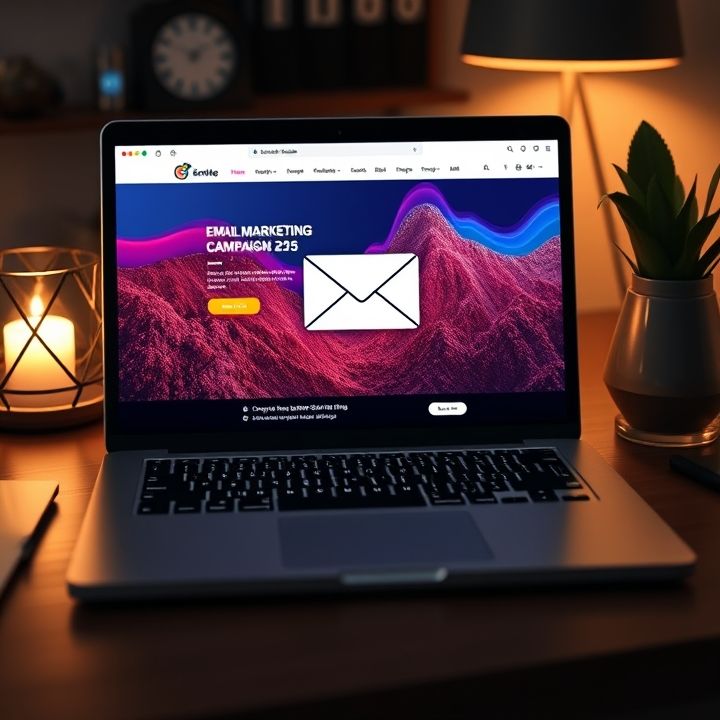Table of Contents
- Introduction
- Identifying Key Metrics from Customer Feedback
- Utilizing Surveys to Gather Actionable Insights
- Segmenting Feedback for Targeted Campaign Improvement
- Incorporating Customer Data in Personalization Strategies
- Analyzing Open and Click-Through Rates for Optimization
- A/B Testing Based on Customer Feedback
- Implementing Feedback Loops for Continuous Improvement
- Leveraging Data Analytics Tools for Enhanced Campaigns
- Conclusion
- Frequently Asked Questions
Introduction
In the digital age, where communication happens at lightning speed, email remains a pivotal tool for engaging with customers. Yet, the true magic unfolds when customer feedback and data are woven into your email strategy. Are you ready to unlock the secret to skyrocketing your email success?
Consider this: with insightful feedback, you can craft emails that resonate with your audience, driving engagement to new heights. And with data-backed strategies, your emails don’t just reach inboxes—they captivate, convert, and create lasting relationships.
Imagine a world where every email you send can be a potential game-changer for your business. That’s the power of mastering customer feedback and tapping into the right data.
| Key Elements | Benefits |
|---|---|
| Customer Feedback | Enhanced engagement, personalized communication |
| Data Analysis | Improved targeting, higher conversion rates |
In this article, we will delve deep into how you can transform your email campaigns by harnessing the full potential of customer feedback and data. Ready to see your email strategy soar? Let’s get started!
Identifying Key Metrics from Customer Feedback
Identifying key metrics from customer feedback is essential for refining email campaigns and maximizing their impact. First, segment feedback into distinct categories such as content relevance, frequency of emails, and personalization. Each category should be analyzed to extract quantitative data and identify trends.
One crucial metric is the Net Promoter Score (NPS) which gauges customer satisfaction and loyalty. High NPS indicates positive customer experience, while low scores may highlight areas where improvement is needed. Click-through rates (CTR) are another pivotal metric, revealing how effectively the email’s content inspires recipients to engage further.
Moreover, analyzing bounce rates can help uncover issues with email deliverability, ensuring messages reach the intended audience. Additionally, customer feedback can shed light on unsubscribe rates, indicating if the frequency or content of emails is driving recipients away. Leveraging this data not only enhances email strategy but also tailors content to meet customer expectations, thereby fostering stronger relationships.
Utilizing Surveys to Gather Actionable Insights
Utilizing surveys is a strategic way to gather actionable insights that can significantly improve your email campaigns. Surveys allow you to directly engage with your audience, gaining valuable feedback on their experiences and preferences. By incorporating multiple-choice questions, open-ended responses, and ratings, you cater to various ways of expressing opinions, which leads to richer data collection.
Design your surveys to focus on key areas of your email campaigns such as content relevance, design elements, and frequency. This not only helps in gauging customer satisfaction but also uncovers areas for improvement. For instance, if a significant number of respondents find the content less relevant, this feedback directs you towards revisiting your segmentation strategy.
Once the data is collected, analyze it to identify trends and patterns. This analysis can inform adjustments to email subject lines, personalization tactics, and overall campaign strategy. Additionally, consider incentivizing participation in surveys to ensure a higher response rate, which further enriches your data quality.
By acting on survey insights, you foster a customer-centric approach, building stronger relationships through tailored communication. This method not only enhances the effectiveness of your email campaigns but also boosts customer loyalty and retention in the long run.
Segmenting Feedback for Targeted Campaign Improvement
Segmenting customer feedback is a crucial strategy for improving email campaigns. By categorizing feedback, businesses can identify distinct audience needs and tailor their content more effectively. For example, segmenting feedback based on demographics or purchase behavior allows companies to personalize emails, ensuring they resonate with specific consumer groups. This not only enhances engagement but also fosters loyalty.
Moreover, feedback can reveal which aspects of campaigns are ineffective. By sorting feedback into categories such as content preferences, design issues, or timing complaints, organizations can pinpoint areas for refinement. This targeted approach enables companies to make precise adjustments that enhance the relevance and impact of their emails.
Integrating feedback into future campaigns can also drive innovation. By recognizing trends in customer preferences and leveraging this data, businesses can experiment with new forms of engagement, such as interactive content or personalized offers. Consequently, segmenting feedback not only optimizes existing campaigns but also inspires creative improvements that keep email marketing strategies fresh and effective.
Incorporating Customer Data in Personalization Strategies
Incorporating customer data in personalization strategies is an essential aspect of modern email marketing. By leveraging insights from customer feedback and data, businesses can craft more targeted and relevant email campaigns. Personalization begins with understanding customer preferences, behaviors, and purchase history, which can be gathered through various data collection methods such as surveys, website analytics, and previous interactions.
Once the data is collected, it can be used to segment audiences into different categories based on shared characteristics. This segmentation allows marketers to tailor their messages to specific groups, ensuring that customers receive content that resonates with their individual needs and interests. For instance, an online retailer can send personalized product recommendations based on a customer’s browsing history or past purchases.
Moreover, dynamic content technology enables email marketers to customize sections of an email in real-time, providing unique experiences for each recipient. This might include personalized product offers, tailored subject lines, or even dynamic images that change depending on the reader’s preferences. By incorporating customer data effectively, businesses not only improve engagement and conversion rates but also foster stronger customer relationships, creating a more loyal customer base.
Analyzing Open and Click-Through Rates for Optimization
Analyzing open and click-through rates (CTR) is crucial for optimizing email campaigns. These metrics offer insights into customer engagement and help refine future strategies. Open rates indicate how compelling your subject lines and sender names are, as they reflect the percentage of recipients who opened your email. A low open rate might suggest that these elements are not enticing enough, prompting an A/B test to experiment with different wording or personalization tactics.
Click-through rates, on the other hand, reveal the effectiveness of your email content. A high CTR means your message resonates and encourages recipients to take the desired action. If the CTR is lower than expected, consider revisiting the email’s design, call-to-action placements, or the clarity of the content. Tracking these metrics over time is essential to identify patterns or shifts in customer behavior.
By regularly monitoring and analyzing open and click-through rates, marketers can effectively segment audiences, personalize content, and schedule optimal send times. This continuous improvement process not only enhances engagement but also increases the overall return on investment (ROI) of email campaigns.
A/B Testing Based on Customer Feedback
A/B testing is a pivotal strategy in email marketing, allowing marketers to optimize their campaigns effectively. By leveraging customer feedback, businesses can identify specific areas within their emails that require improvement. Customers’ opinions can highlight which sections resonate well and which fall flat. Incorporating these insights into A/B testing ensures that the variations being tested are grounded in actual user experiences rather than assumptions. For instance, if feedback suggests that customers find the call-to-action (CTA) of a campaign unclear or unattractive, A/B testing different versions of the CTA can provide data on which version performs better in terms of engagement and conversion rates.
Furthermore, A/B testing based on feedback helps marketers understand the preferences of different customer segments. By segmenting feedback, companies can tailor their testing approach to align with the expectations of various demographic groups, ensuring that the content is relevant and engaging for each audience segment. This targeted approach not only enhances user experience but also boosts the overall effectiveness of email campaigns. In essence, A/B testing rooted in customer feedback transforms subjective critiques into objective data points, leading to more informed decision-making and better marketing outcomes.
Implementing Feedback Loops for Continuous Improvement
Implementing feedback loops is a crucial strategy for continuously improving email campaigns. A feedback loop refers to the process of collecting customer responses, analyzing the data, and making necessary changes to enhance performance. The first step is to encourage and facilitate easy feedback from your audience. This can be achieved through surveys, quizzes, or even directly within the email. Leveraging feedback ensures you understand customer preferences, pain points, and expectations.
Once you gather this data, the next phase is analysis. Use tools and software to categorize and prioritize feedback. Identify recurring themes or significant pain points that can drive your email marketing strategies. This analysis allows marketers to re-align their content with what genuinely resonates with their audience.
After understanding the insights, it’s essential to test and incorporate changes. A/B testing different elements based on customer feedback, such as subject lines or email design, can offer further insights into what works best. Regularly update your campaign strategies with these learnings to maintain relevance and effectiveness. In summary, having a structured feedback loop helps in creating dynamic and responsive email campaigns that meet the evolving needs of your customers.
Leveraging Data Analytics Tools for Enhanced Campaigns
Leveraging data analytics tools is a vital strategy for enhancing email campaigns and ensuring they are as effective as possible. These tools provide valuable insights into customer behavior, preferences, and trends, offering a comprehensive view of how the audience engages with email content. By analyzing metrics such as open rates, click-through rates, and conversion rates, marketers can tailor their strategies to better meet the needs and expectations of their target audience.
Data analytics tools help identify what content resonates with the audience and what doesn’t, allowing for data-driven decisions that optimize email content. For instance, A/B testing can be used to compare different subject lines or email designs to determine which version yields better results. Furthermore, segmentation based on collected data enables personalized messaging, increasing the likelihood of engagement and conversion.
Advanced analytics can also predict future trends and customer needs, guiding the creation of forward-thinking campaigns. When marketers fully harness the potential of data analytics, they can not only improve current campaign performance but also build a robust framework for future success. Incorporating these insights into the planning and execution phases ensures that email campaigns are both relevant and impactful.
Conclusion
In conclusion, mastering customer feedback and data is a game changer for elevating your email marketing success. By systematically identifying key metrics and utilizing surveys, businesses can gather invaluable insights that drive meaningful improvements. Segmenting feedback amplifies the precision of targeting and personalizes communication, while analyzing open and click-through rates guides optimization strategies for greater impact.
The incorporation of A/B testing based on customer feedback transforms hypothetical assumptions into strategic insights, ensuring campaigns resonate with diverse audience segments. Creating robust feedback loops fosters continuous improvement, keeping your email strategies dynamic and customer-focused.
Moreover, leveraging data analytics tools is indispensable for translating insights into action, crafting more relevant and engaging email content that aligns with customer needs. These tools not only refine current campaigns but also lay the groundwork for future success, enabling marketers to anticipate customer trends and preferences.
Ultimately, integrating customer feedback with data-driven tactics fortifies relationships and enhances loyalty, establishing a foundation for sustainable growth. Embracing these strategies will not only boost your email metrics but also transform your email marketing efforts into a powerhouse of customer engagement and satisfaction.

